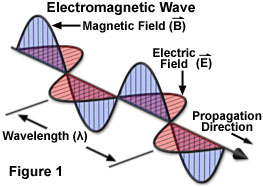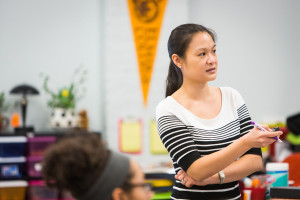11.17.14Dan Cotton on Vicki Hernandez modeling Check For Understanding 2.0
My colleague Dan Cotton, who’s guest posted here and here recently, visited Vicki Hernandez’s 7th Grade Science Class at Troy Prep Middle School a few days ago observing a lesson that made him wish he’d had his video camera. He tried to capture some of what Vicki did in this write-up:
A few days ago, I had the pleasure of observing Vicki Hernandez’s 7th grade science class at Troy Prep Middle School. The first seven minutes kicked off with a beautiful sequence of Check for Understanding. Unfortunately, I didn’t have a video camera to capture this sequence. Doug said the next best thing would be to describe it to you:
The day’s topic was electromagnetic waves. As scholars started the Do Now, Vicki was already Circulating up and down the rows. She quickly noticed that many scholars were confusing two properties of waves (wavelength and amplitude), which she introduced the previous day. In the first of two chapters on Check for Understanding in Teach Like a Champion 2.0, Doug refers to this as Tracking, Not Watching – deliberately collecting evidence of student understanding, rather than just circulating to verify that students are on task.

When the timer went off, Vicki didn’t jump immediately into reviewing the answers when she knew a number of scholars had it wrong. Rather, she had the class, in unison, do the physical gesture they learned to distinguish wavelength (“Horizontal!”) and amplitude (“Vertical!”). She reinforced a concept that would help scholars identify their error and fix their mistake. She then gave scholars one minute to revisit their answers for the first two questions and revise if needed. Many did.
Check for Understanding requires not just gathering data, but acting immediately. Vicki’s response to the data she gathered was efficient and effective. Here’s where she took it to the next level: “Raise your hand if you changed your answer. I want to hear from you.” Hands shot up. Vicki called on a scholar. He confidently shared his answer. Vicki’s expression remained so neutral that I couldn’t tell whether he was right or wrong. She then asked, “Why did you change your answer?” and he did so using the definitions she just retaught. Only then did Vicki reveal that he was correct.
Vicki’s sequence beautifully illustrates our 2.0 CFU guidance. One of the concepts we’ve learned from studying champion teachers is the importance of creating a Culture of Error – an academic culture in which getting it wrong is not just normal, but is in fact, a positive part of the learning process. Two techniques champion teachers like Vicki use to foster that culture are Manage Your Tell and Withhold the Answer. By maintaining a neutral facial expression, tone, and words, Vicki didn’t tip off the class if the scholar sharing his answer was right or wrong. As a result, she built suspense and kept all the scholars cognitively engaged until she revealed the correct answer. By soliciting hands from scholars who had changed their answers, Vicki spotlighted the importance of Getting It Wrong, Then Getting It Right — normalizing and valorizing that sequence as essential for learning. By asking, “Why did you change your answer?” Vicki gained clear evidence that the scholar made the revision using the correct underlying thinking; his explanation also served as a mini-reteach for other scholars who got it wrong. Finally, from the scholar perspective, rather than starting the class with errors, they were starting with success. The positive energy and momentum was palpable.
Great work, Vicki and thanks! And to our blog readers: We promise next time we visit Vicki’s class, we’ll bring our video camera.

